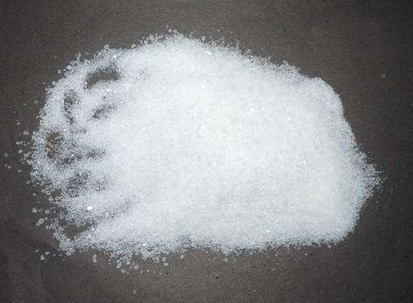| description | Ammonium sulfate (AS) is the earliest production and use of nitrogen fertilizer. It is usually used as a standard nitrogen fertilizer, nitrogen content is between 20% to 30%. It is a very important fertilizer for any kind of soil that's high in pH and needs a little bit of sulfates to work against the high calcium or the high pH. The nice thing about the ammonium sulfate is that the nitrogen in it is a little bit slower releasing so it lasts throughout the growing season better than the nitrate forms of nitrogen.
In the 1960s, Ammonium sulfate is the main variety of nitrogen fertilizer, but also is a major source to provide crop nutrients sulfur. Firstly ammonia and sulfuric acid was neutralized to obtain, but later increasing proportion of by-product ammonium sulfate, and now Ammonium sulfate is actually produced as a by-product in many industrial processes including the manufacturing of steel, coking industry, caprolactam, sulfuric acid tail gas desulfurization, desulfurization of power plant, acrylonitrile and methyl methacrylate, zinc oxide and some polyester compounds.
Pure product of ammonium sulfate is white crystals, heated to 100 ℃ , began to be decomposed into ammonia and ammonium bisulfate, a by-product with a yellowish or gray, small moisture absorption, easy to agglomerate, it is easier to save and easily soluble in water, insoluble ethanol and acetone.
Ammonium sulfate serves as physiological acidic nitrogen fertilizer, is generally more suitable for wheat, corn, rice, cotton, potato, hemp, fruit trees, vegetables and other crops. For soils, the ammonium sulfate is most suitable for neutral soil and alkaline soil, but not suitable for acidic soil. Also used as analytical reagents (precipitating agent, masking agent), in electrochemical analysis, supports electrolyte, microbiological culture media and preparation of ammonium salts.
The above information is edited by the Chemicalbook of Liu Yujie. |
| nitrogenous fertilizer | Ammonium sulfate was the first nitrogenous fertilizer made by the Haber-Bosch process, produced by the reaction of ammonia with sulfuric acid. In contrast with the nitrate salt, it is chemically stable, not highly hygroscopic. It also supplies supplemental sulfur to soils that may be deficient in this element, but this is of minor value when it is used on soils receiving applications of ordinary superphosphate. The disadvantages of the material are its relatively low nitrogen content, which increases storage and transportation costs, and its marked tendency to cause soil acidification, which is greater than that of any other nitrogen fertilizer material.
 |
| Uses | Ammonium sulfate is a typical Nitrogen-based, water-soluble, and fast acting fertilizer, for various soil and crop. It is used largely as an artificial fertilizer for alkaline soils. In the soil the ammonium ion is released and forms a small amount of acid, lowering the pH balance of the soil , while contributing essential nitrogen for plant growth. For the analysis reagents, also for protein precipitation. Used as flux, fire retardant in textile fabric industry, as the salting-out agent, osmotic pressure regulating agents in medicine. Used as raw materials of hydrogen peroxide , ammonium chloride, ammonium alum and production in chemical industry, as a flux in the welding industry. Used as plating bath additives in electroplating industry. Used as dough modifier, yeast nutrients in food grade product. Ammonium sulfate is also used as an agricultural spray adjuvant for water soluble insecticides, herbicides, and fungicides. There it functions to bind iron and calcium cations that are present in both well water and plant cells.
|
| Toxicity | LD50 orally in Rabbit: 2840 mg/kg |
| Description | Ammonium sulfate was the first nitrogenous fertilizer made by the Haber-Bosch process, produced by the reaction of ammonia with sulfuric acid. In contrast with the nitrate salt, it is chemically stable, not highly hygroscopic. It also supplies supplemental sulfur to soils that may be deficient in this element, but this is of minor value when it is used on soils receiving applications of ordinary superphosphate.
The disadvantages of the material are its relatively low nitrogen content, which increases storage and transportation costs, and its marked tendency to cause soil acidification, which is greater than that of any other nitrogen fertilizer material. |
| Chemical Properties | White crystalline powder |